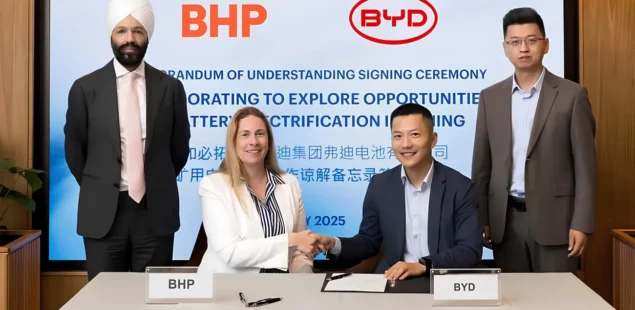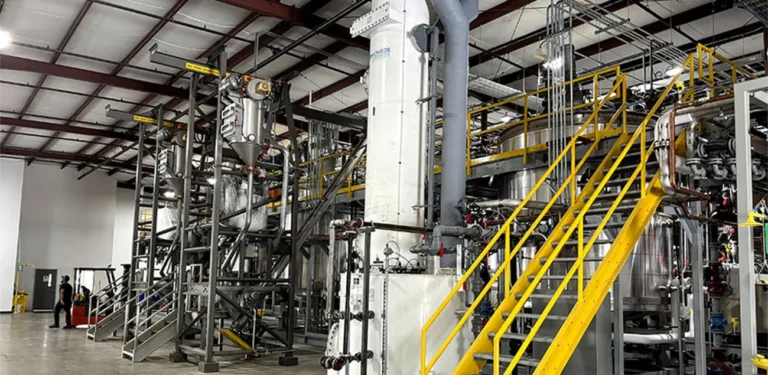
Global Copper Surplus to Persist Through 2026
Global refined copper production is projected to increase by 2.9% in 2025, reaching 28.9 million tonnes, according to the International Copper Study Group. The rise is attributed to growing output in China and the commissioning of new facilities in countries including Indonesia, India and the Democratic Republic of Congo.
In 2026, production is expected to climb by another 1.5%, bringing the global total to over 30.8 million tonnes. Meanwhile, copper demand is forecast to grow at a slower pace. Consumption is set to rise by 2.4% in 2025 to 28 million tonnes, down from a previously forecasted 2.7% increase made in September 2024. The revised figure reflects uncertainties in global trade policy and its expected impact on economic conditions.
By 2026, global copper demand may grow by another 1.8% to approximately 28.5 million tonnes. In China, which remains the largest consumer, demand is predicted to grow by 2% in 2025 and by 0.8% in 2026.
At the end of 2024, the global copper market had a surplus of 138,000 tonnes. The group expects this surplus to rise to 289,000 tonnes in 2025 and decline slightly to 209,000 tonnes in 2026. However, the organisation notes that global market conditions remain volatile and subject to change.
US-Japan Cobalt Supply Agreement Aims to Offset Chinese Dominance
Japanese trading group Mitsui has signed a letter of intent with US-based EVelution Energy to secure nearly all the cobalt output from a new plant planned in Arizona. The agreement provides for the supply of 3,000 tonnes of cobalt and 19,000 tonnes of cobalt sulphate per year.
Construction of the facility is scheduled to begin by the end of 2025, with operations expected to start in 2027. The site will be powered entirely by solar energy, with excess energy routed to local farms. It is also designed to recycle 70% of its water use and produce no tailings.
According to the US Geological Survey, global cobalt mining in 2024 totalled 290,000 tonnes, with the Democratic Republic of Congo accounting for 220,000 tonnes. Indonesia mined 28,000 tonnes, Canada 4,500 tonnes, and the US only 300 tonnes. In terms of refined cobalt, 75% of the global output is produced in China, which has significant influence over global pricing through its export policies.
In 2024, US cobalt production stood at 2,300 tonnes—2,000 tonnes from recycled materials and 300 tonnes from mining. Once operational, EVelution Energy’s facility could meet up to 40% of US cobalt demand. The deal with Mitsui will also ensure cobalt supply for Japanese manufacturers of batteries and heat-resistant alloys, sectors that rely entirely on imports as Japan has no cobalt reserves or domestic refining capabilities.
The initiative is expected to reduce the dependence of both the US and Japan on Chinese cobalt, potentially curbing China’s influence in this strategic segment of the metals market.
US Aluminium Premiums Surge Amid Trade Barriers
Aluminium premiums in the United States have climbed nearly 60% since the start of the year, surpassing $900 per tonne. In contrast, premiums in the European Union have dropped by 35% to $230 per tonne.
The surge in the US is primarily the result of import tariffs introduced during Donald Trump’s presidency, including a 25% duty on aluminium from Canada, Mexico and the EU. These measures shifted global supply flows toward Europe, leading to a glut in EU markets, falling premiums and full warehouses.
Efforts by traders to profit from the price difference between the US and EU have been obstructed by the 25% US tariff, which effectively adds $600 per tonne. This, combined with logistical challenges and high transport costs, has made arbitrage unfeasible.
US buyers are left with few alternatives and are forced to accept the higher prices. The domestic aluminium industry has long suffered from high electricity costs and increased imports. In 2022, US production amounted to just 670,000 tonnes of primary aluminium and 3.6 million tonnes of secondary aluminium, while imports of various aluminium products reached nearly 5 million tonnes.
The United Arab Emirates remains the only large primary aluminium supplier exempt from the US tariffs, accounting for around 11% of imports. Some American buyers are increasingly sourcing aluminium from the UAE as a result.
High aluminium premiums in the US are expected to persist through 2025 due to continued protectionist policies and limited domestic capacity.
Glencore Cuts Copper Output but Holds Annual Forecast
Glencore reported a 30% drop in copper production for the first quarter of 2025, with output falling to 168,000 tonnes. The decrease was attributed to lower ore grades and processing volumes at three mines: Collahuasi in Chile, Antapaccay in Peru, and KCC in the Democratic Republic of Congo.
Despite the weak start, the company expects production to rise in the remaining quarters and has maintained its full-year copper output target of 850,000–910,000 tonnes.
Cobalt production increased by 44% to 9,500 tonnes in Q1 2025, while zinc production rose by 4% to 213,600 tonnes. Glencore has kept its 2025 production forecast unchanged at 40,000–45,000 tonnes of cobalt and 930,000–990,000 tonnes of zinc.
Challenges persist, particularly in Australia, where Glencore has entered discussions with federal and Queensland state authorities about the future of its copper operations. The complex includes two mines, a smelter in Mount Isa and a refinery in Townsville.
In October 2023, Glencore announced plans to shut the mines by the second half of 2025 due to the increasing depth of operations—now nearing 2 kilometres—and declining profitability. The mines produce ore with a copper content of 1.5–1.7%.
The Mount Isa plant also processes third-party concentrates from northeastern Australia. Together with the Townsville refinery, the complex has a combined capacity of 300,000 tonnes of cathode copper per year. Glencore says continued operation after the mine closures will require government support.
The company notes that refining and enrichment margins have turned negative, a situation it says has not occurred in 25 years. It also points to subsidised competition from China and Indonesia as further pressure on its operations.
New Tin Uses Could Drive Future Demand Growth
Tin prices on the London Metal Exchange are gradually recovering from a recent drop, currently trading at around $32,000 per tonne after peaking at $37,900.
While demand from traditional sectors like food can manufacturing continues, new applications could boost long-term tin consumption. These include environmental technologies such as water purification and carbon capture.
Certain tin-based compounds have shown the ability to remove harmful pollutants from industrial wastewater, making them safe for aquatic ecosystems. Tin catalysts are also being developed to absorb atmospheric carbon dioxide for storage, contributing to climate mitigation efforts.
In the energy sector, tin is being explored for its potential to enhance lithium-ion and sodium-ion batteries. Anode materials containing tin offer high volumetric energy density and can improve battery performance. Researchers have also developed water-based tin batteries with promising reliability.
Tin’s role is expanding in solar energy as well. At Japan’s Tsukuba University, scientists have replaced toxic lead with tin in perovskite solar cells. By introducing organic compounds into the crystal structure, they have improved the material’s resistance to oxidation and increased its stability.
These developments are expected to drive a 20% increase in global tin demand over the next decade.



